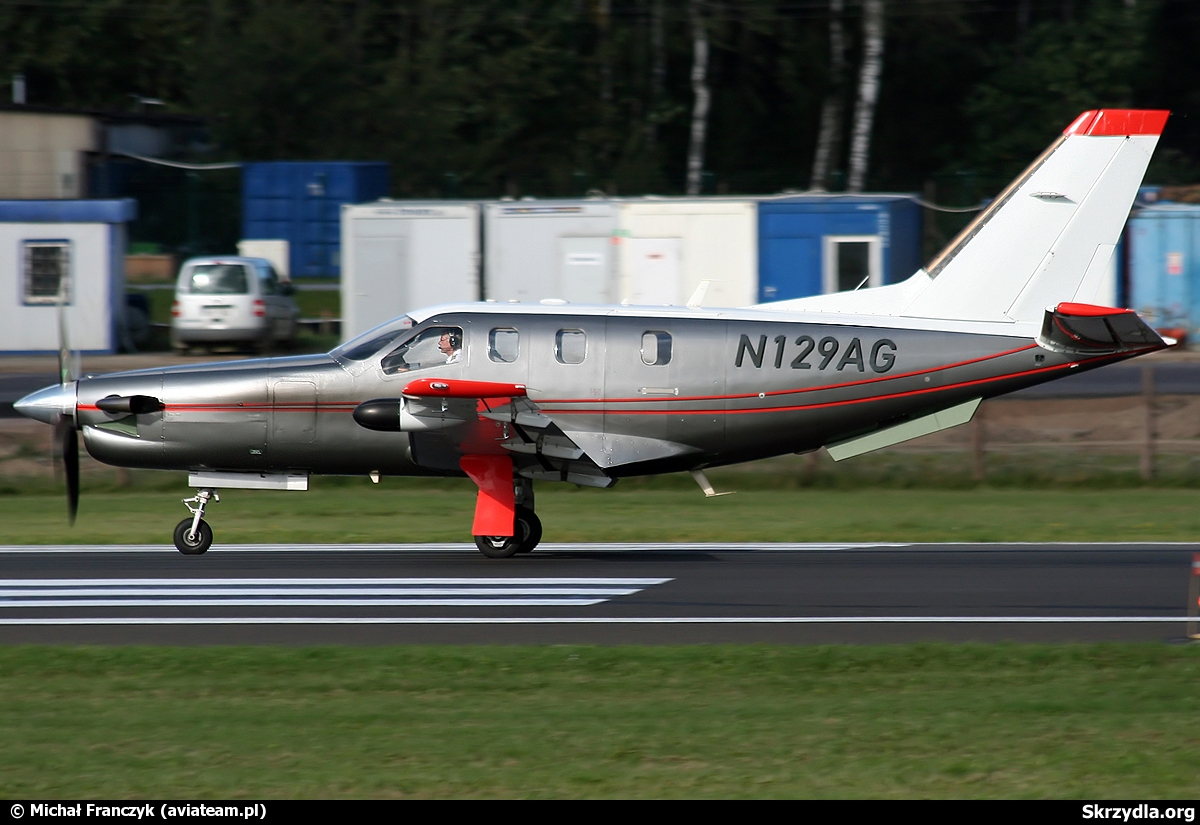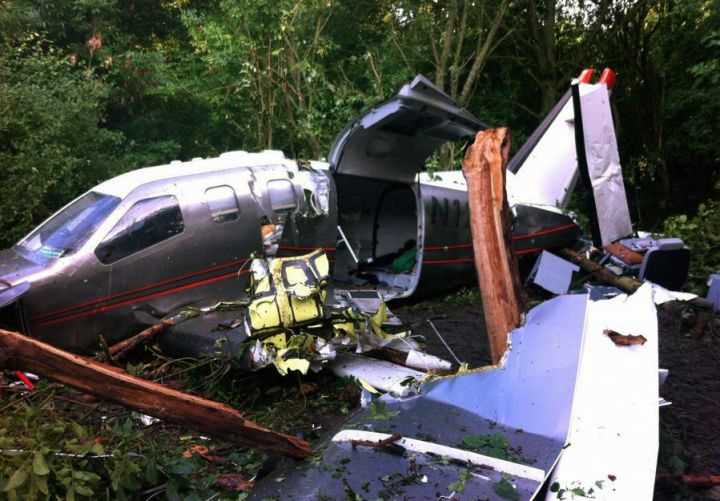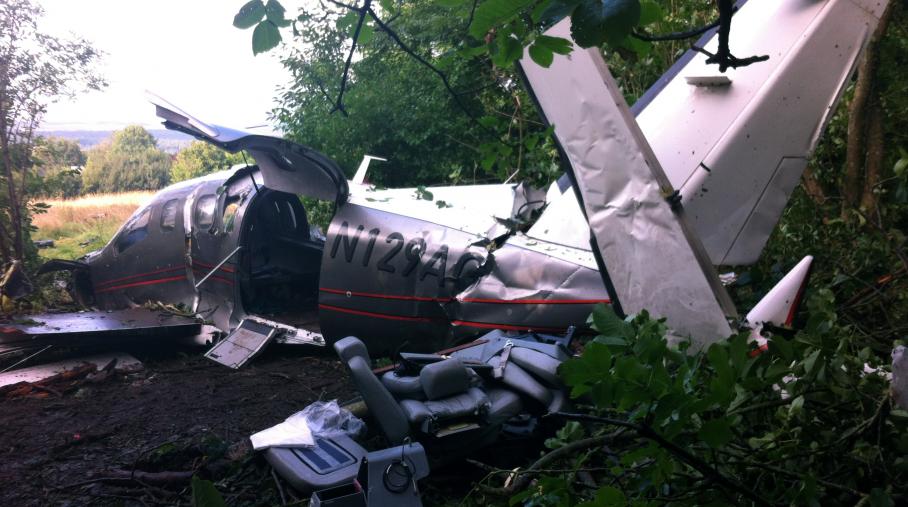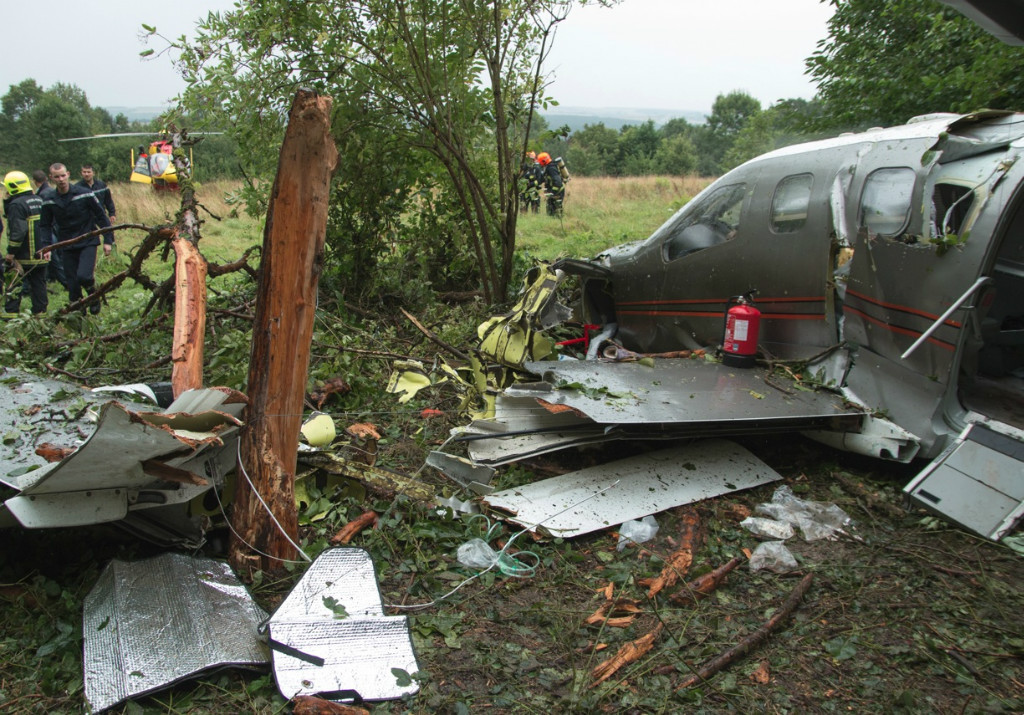Country
Crash of a Socata TBM-700 in Yamazoe: 2 killed
Date & Time:
Aug 14, 2017 at 1215 LT
Registration:
N702AV
Survivors:
No
Schedule:
Yao – Fukushima
MSN:
182
YOM:
2001
Crew on board:
1
Crew fatalities:
Pax on board:
1
Pax fatalities:
Other fatalities:
Total fatalities:
2
Captain / Total hours on type:
7.00
Aircraft flight hours:
2094
Circumstances:
The single engine aircraft departed Yao Airport at 1157LT on a leisure flight to Fukushima, carrying one passenger and one pilot. Few minutes later, the pilot reported an unexpected situation to ATC and was cleared to return to Yao. At an altitude of 17,200 feet and a speed of 150 knots, the aircraft entered an uncontrolled descent, partially disintegrated in the air and eventually crashed in a hilly and wooded terrain near the village of Yamazoe, bursting into flames. Both occupants were killed.
Probable cause:
In the accident, it is highly probable that the Aircraft lost control during flight, nose-dived while turning, and disintegrated in mid-air, resulting in the crash. It is somewhat likely that the Aircraft lost control during flight, because the captain did not have pilot skills and knowledge necessary for the operation of the Aircraft, and was not able to perform proper flight operations.
Final Report:

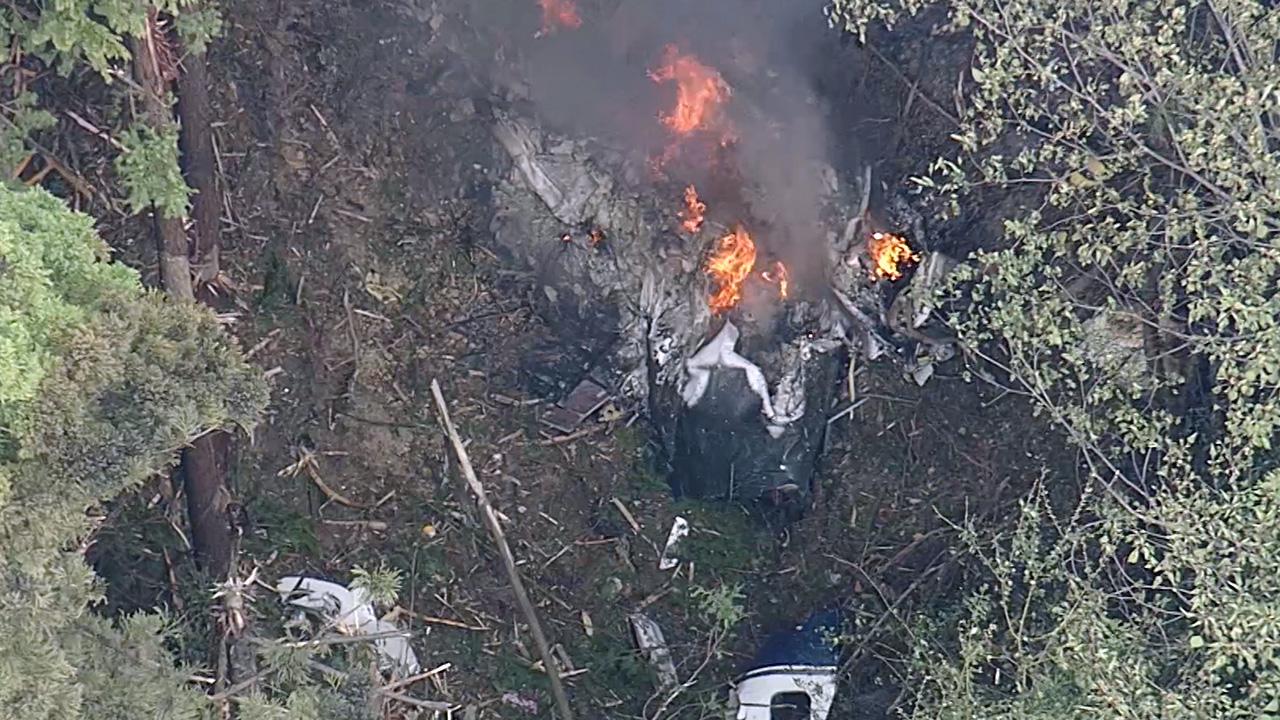

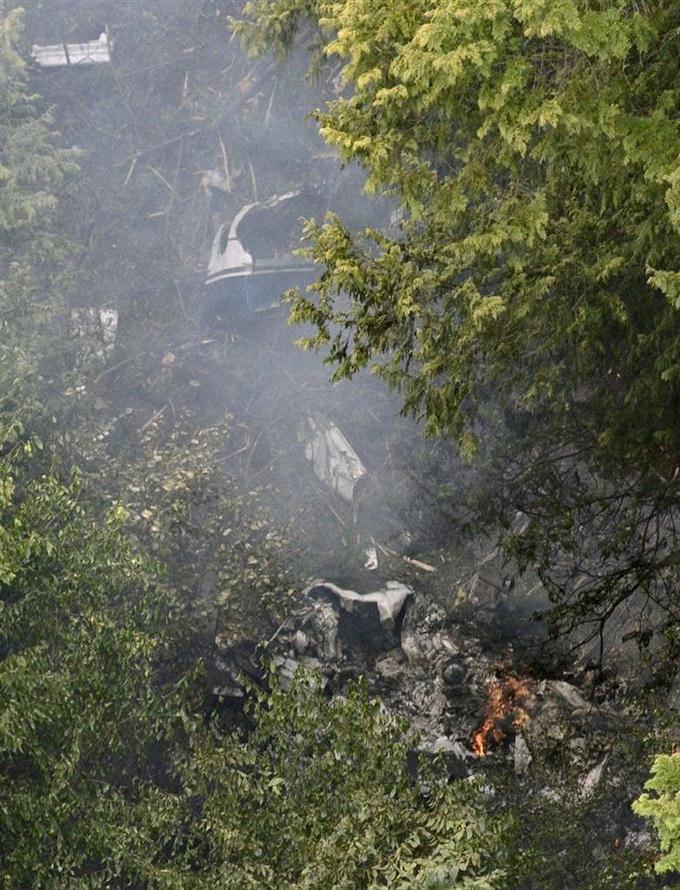
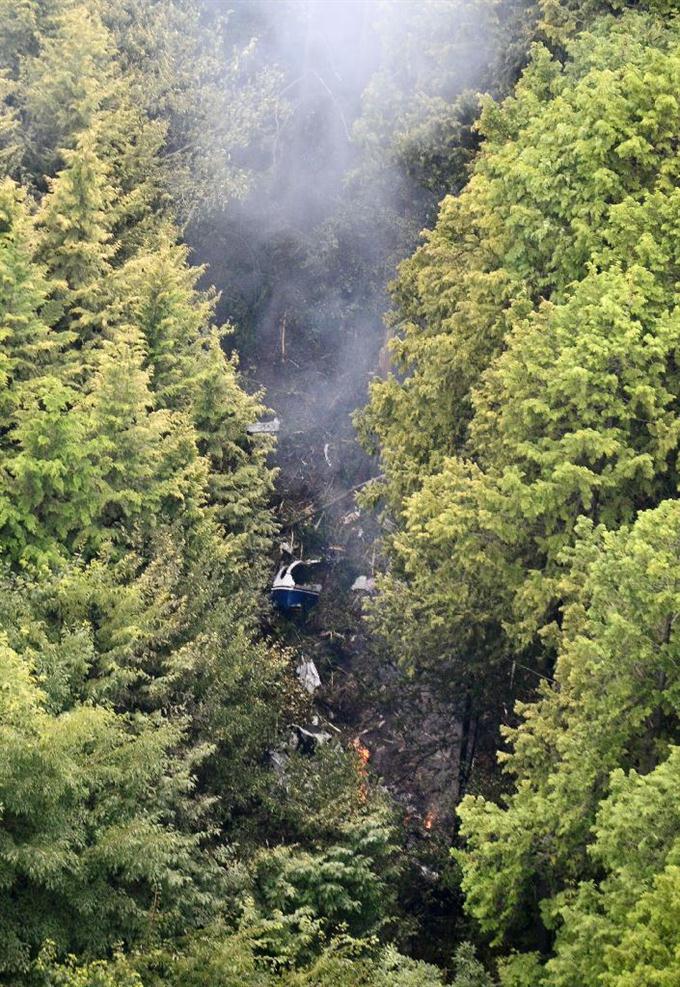
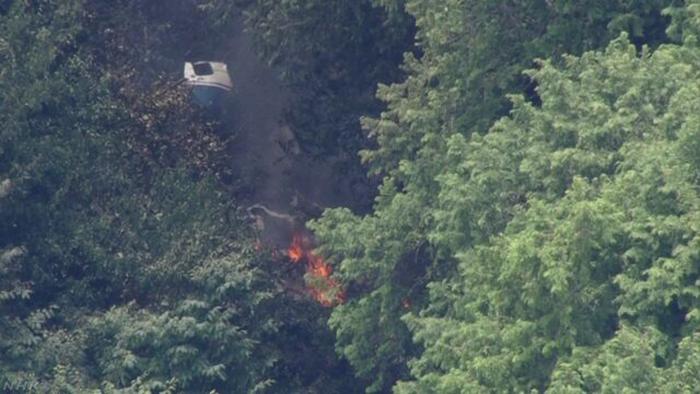
Crash of a Socata TBM-700A in Bellingham
Date & Time:
Feb 27, 2017 at 1220 LT
Registration:
C-GWVS
Survivors:
Yes
Schedule:
Bellingham – Pierce County
MSN:
210
YOM:
2002
Crew on board:
1
Crew fatalities:
Pax on board:
0
Pax fatalities:
Other fatalities:
Total fatalities:
0
Captain / Total hours on type:
381.00
Aircraft flight hours:
1962
Circumstances:
The pilot reported that, during the preflight, it was snowing, and he wiped the snow that had accumulated on the wings off "as best as [he] could." He added that, while taxiing to the runway, "snow was falling heavily," and he observed "light accumulation of wet snow" on the wings. During the takeoff roll, he observed the snow "sloughing off" the wings as the airspeed increased. Subsequently, during the climb to about 150 ft above the ground, the airplane yawed to the left, and he attempted to recover using right aileron. He reported that he "could see a stall forming," so he lowered the nose and reduced power to idle. The airplane impacted the general aviation ramp in a left-wing-down attitude and slid 500 to 600 ft. The pilot reported on the National Transportation Safety Board Aircraft Accident/ Incident Report 6120.1 form that the airplane stalled, and he recommended "better deicing" before takeoff. The airplane sustained substantial damage to the fuselage and left wing. The pilot reported that there were no preaccident mechanical failures or malfunctions with the airframe or engine that would have precluded normal operation. A review of recorded data from the automated weather observation station located on the airport revealed that, about 27 minutes before the accident, the wind was 010° at 8 knots, 1/2-mile visibility, moderate snow, freezing fog, and sky condition broken at 500 ft above ground level (agl) and overcast at 1,500 ft agl. The airplane departed from runway 16. The Federal Aviation Administration (FAA) Aeronautical Information Manual stated, in part: "The presence of aircraft airframe icing during takeoff, typically caused by improper or no deicing of the aircraft being accomplished prior to flight has contributed to many recent accidents in turbine aircraft." The manual further stated, "Ensure that your aircraft's lift-generating surfaces are COMPLETELY free of contamination before flight through a tactile (hands on) check of the critical surfaces when feasible. Even when otherwise permitted, operators should avoid smooth or polished frost on lift-generating surfaces as an acceptable preflight condition." FAA Advisory Circular, AC 135-17, stated in part: "Test data indicate that ice, snow, or frost formations having thickness and surface roughness similar to medium or course sandpaper on the leading edge and upper surfaces of a wing can reduce wing lift by as much as 30 percent and increase drag by 40 percent." Included in the public docket for this report is a copy of a service bulletin from the airplane manufacturer, which describes deicing and anti-icing ground procedures. It stated, in part: During conditions conducive to aeroplane icing during ground operations, take-off shall not be attempted when ice, snow, slush or frost is present or adhering to the wings, propellers, control surfaces, engine inlets or other critical surfaces. This is known as the "Clean Aircraft Concept". Any deposit of ice, snow or frost on the external surfaces may drastically affect its performance due to reduced aerodynamic lift and increased drag resulting from the disturbed airflow.
Probable cause:
The pilot's failure to properly deice the airplane before takeoff, which resulted in an aerodynamic stall during the initial climb.
Final Report:
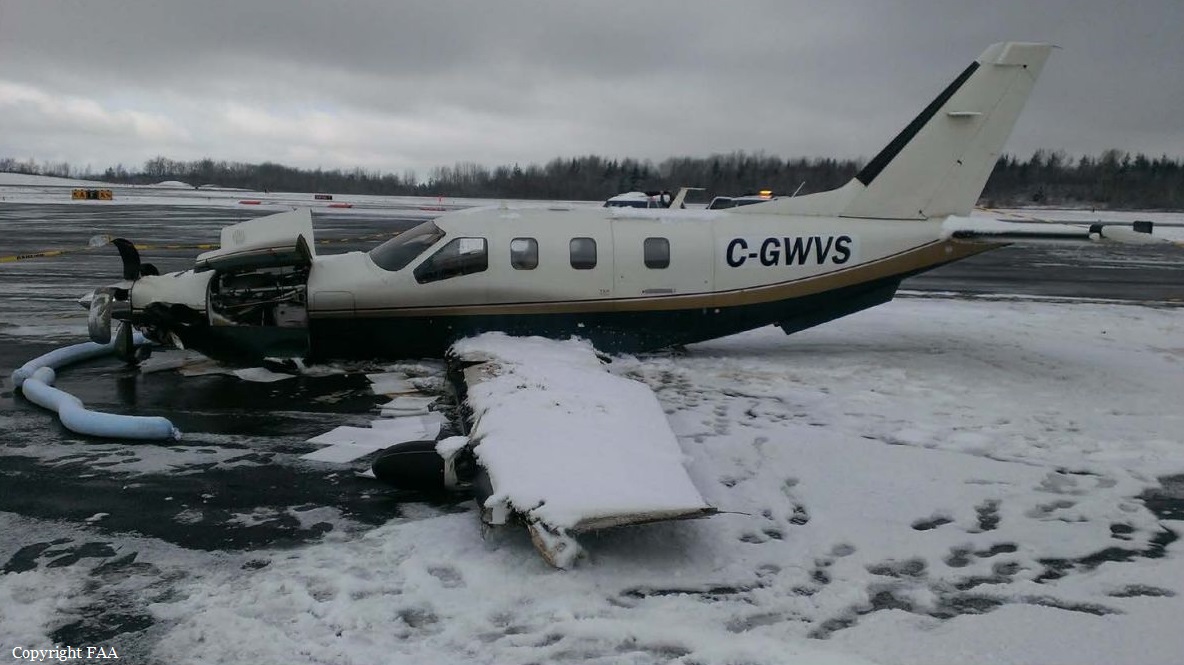
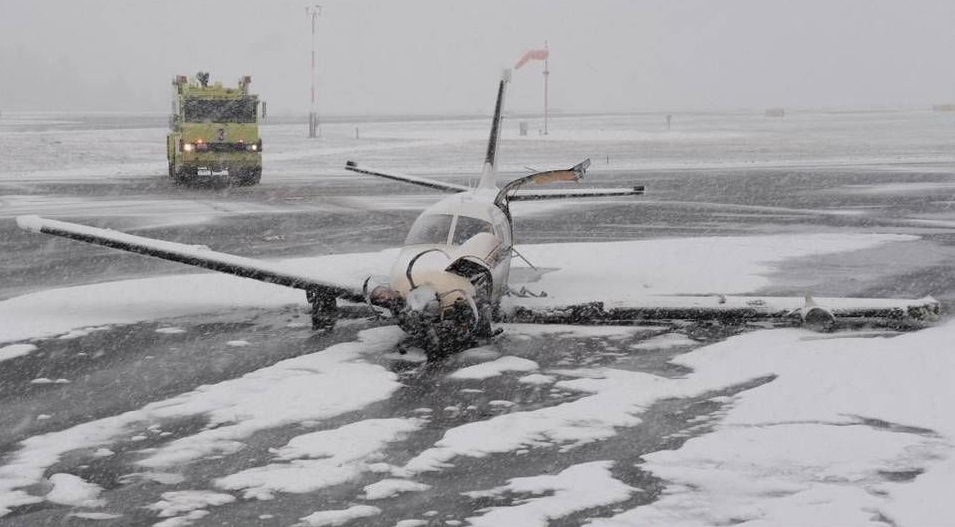
Crash of a Socata TBM-700 in Milwaukee: 2 killed
Date & Time:
Jul 29, 2015 at 1810 LT
Registration:
N425KJ
Survivors:
No
Schedule:
Beverly - Milwaukee
MSN:
518
YOM:
2009
Crew on board:
1
Crew fatalities:
Pax on board:
1
Pax fatalities:
Other fatalities:
Total fatalities:
2
Captain / Total hours on type:
721.00
Aircraft flight hours:
656
Circumstances:
The airline transport pilot was landing at the destination airport after a cross-country flight in visual meteorological conditions. The tower controller stated that the airplane's landing gear appeared to be extended during final approach and that the airplane landed within the runway's touchdown zone. The tower controller stated that, although the airplane made a normal landing, he heard a squealing noise that continued longer than what he believed was typical. The pilot subsequently transmitted "go-around." The tower controller acknowledged the go-around and cleared the pilot to enter a left traffic pattern. The tower controller stated that he heard the engine speed accelerate while the airplane maintained a level attitude over the runway until it passed midfield. He then saw the airplane pitch up and enter a climbing left turn. The tower controller stated that the airplane appeared to enter an aerodynamic stall before it descended into terrain in a left-wing-down attitude. Another witness reported that he saw the airplane, with its landing gear extended, in a steep left turn before it descended rapidly into terrain. A postaccident examination did not reveal any evidence of flight control, landing gear, or engine malfunction. An examination of the runway revealed numerous propeller slash marks that began about 215 ft past the runway's touchdown zone; however, there was no evidence that any portion of the airframe had impacted the runway during the landing. Additionally, measurement of the landing gear actuators confirmed that all three landing gear were fully extended at the accident site. Therefore, the pilot likely did not adequately control the airplane's pitch during the landing, which allowed the propeller to contact the runway. Due to the propeller strikes, the propeller was likely damaged and unable to provide adequate thrust during the go-around. Further, based on the witness accounts, the pilot likely did not maintain adequate airspeed during the climbing left turn, which resulted in the airplane exceeding its critical angle of attack and experiencing an aerodynamic stall at a low altitude.
Probable cause:
The pilot's improper pitch control during the landing, which resulted in the propeller striking the runway, and his failure to maintain adequate airspeed during the subsequent go-around, which resulted in the airplane exceeding its critical angle of attack and experiencing an aerodynamic stall at a low altitude.
Final Report:
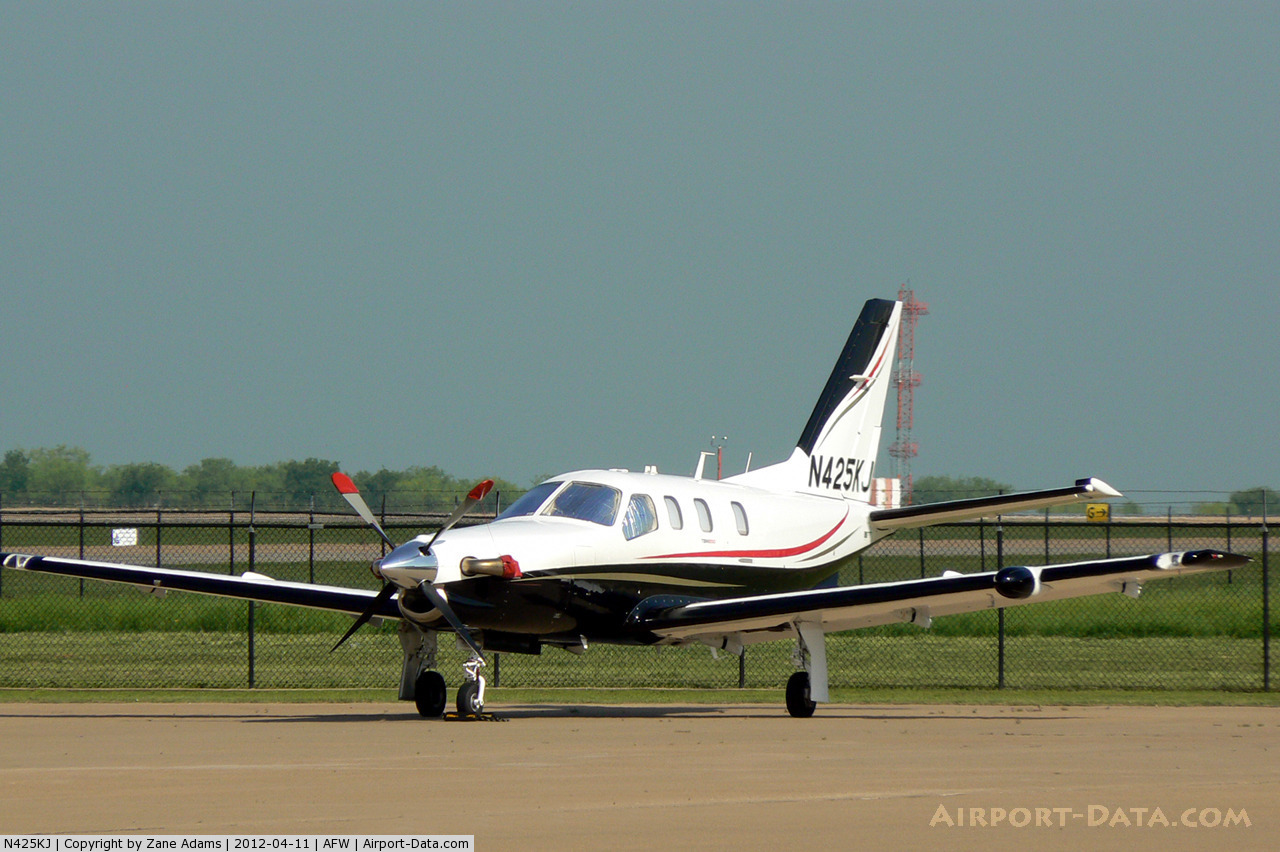
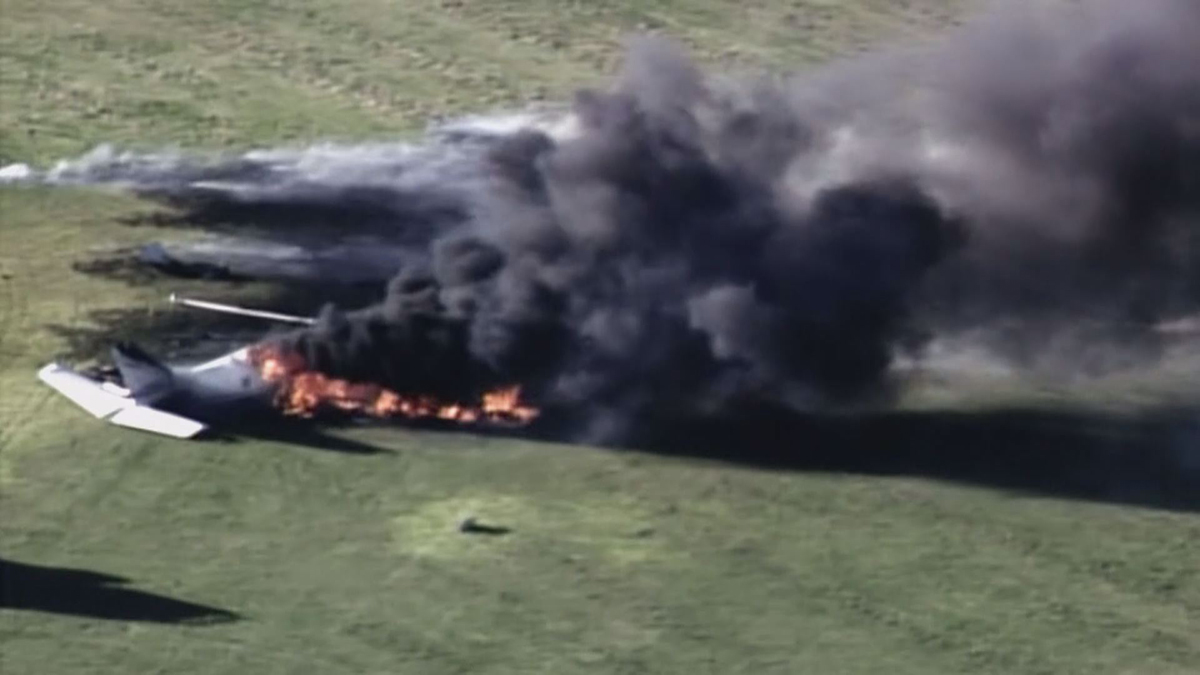
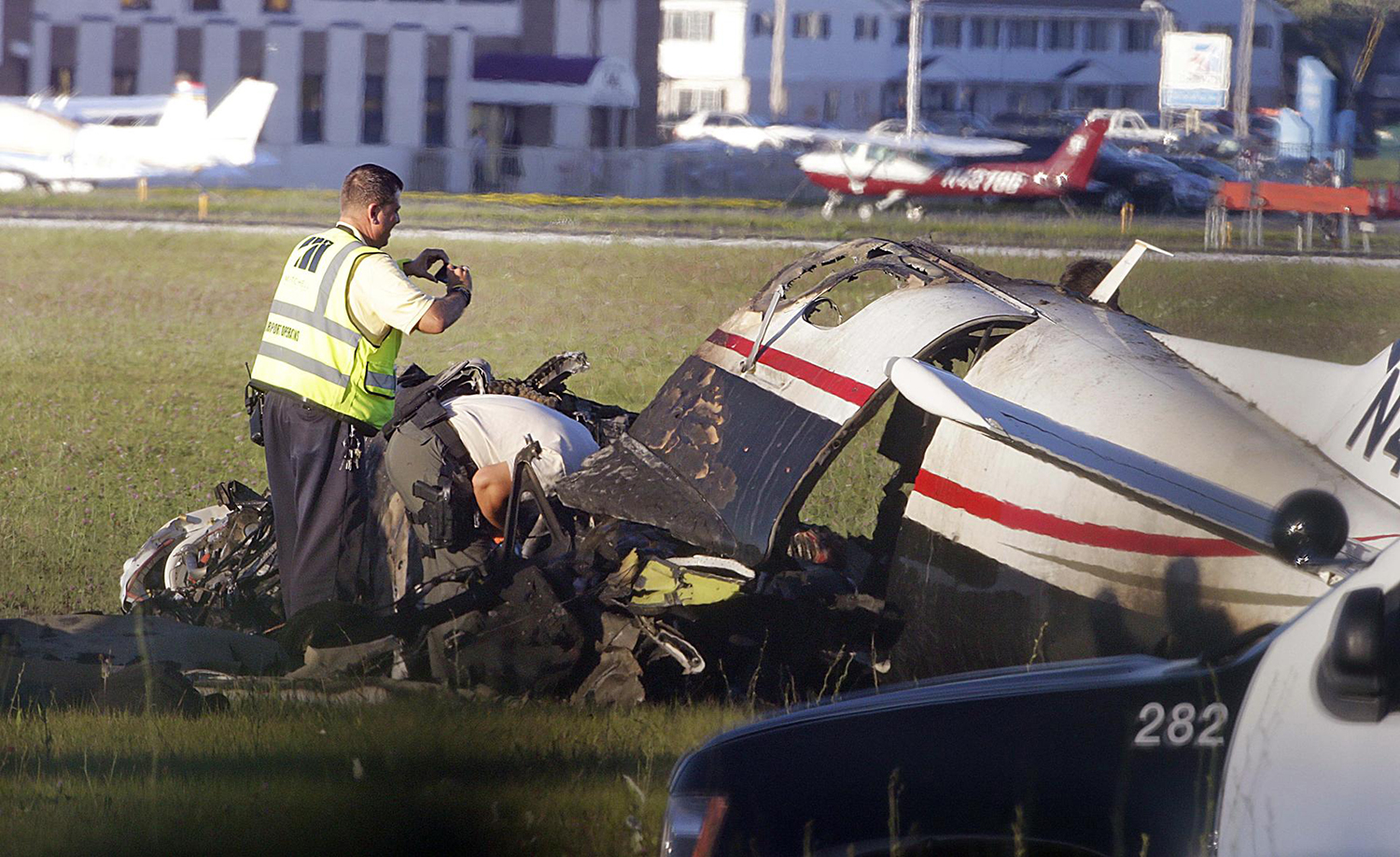
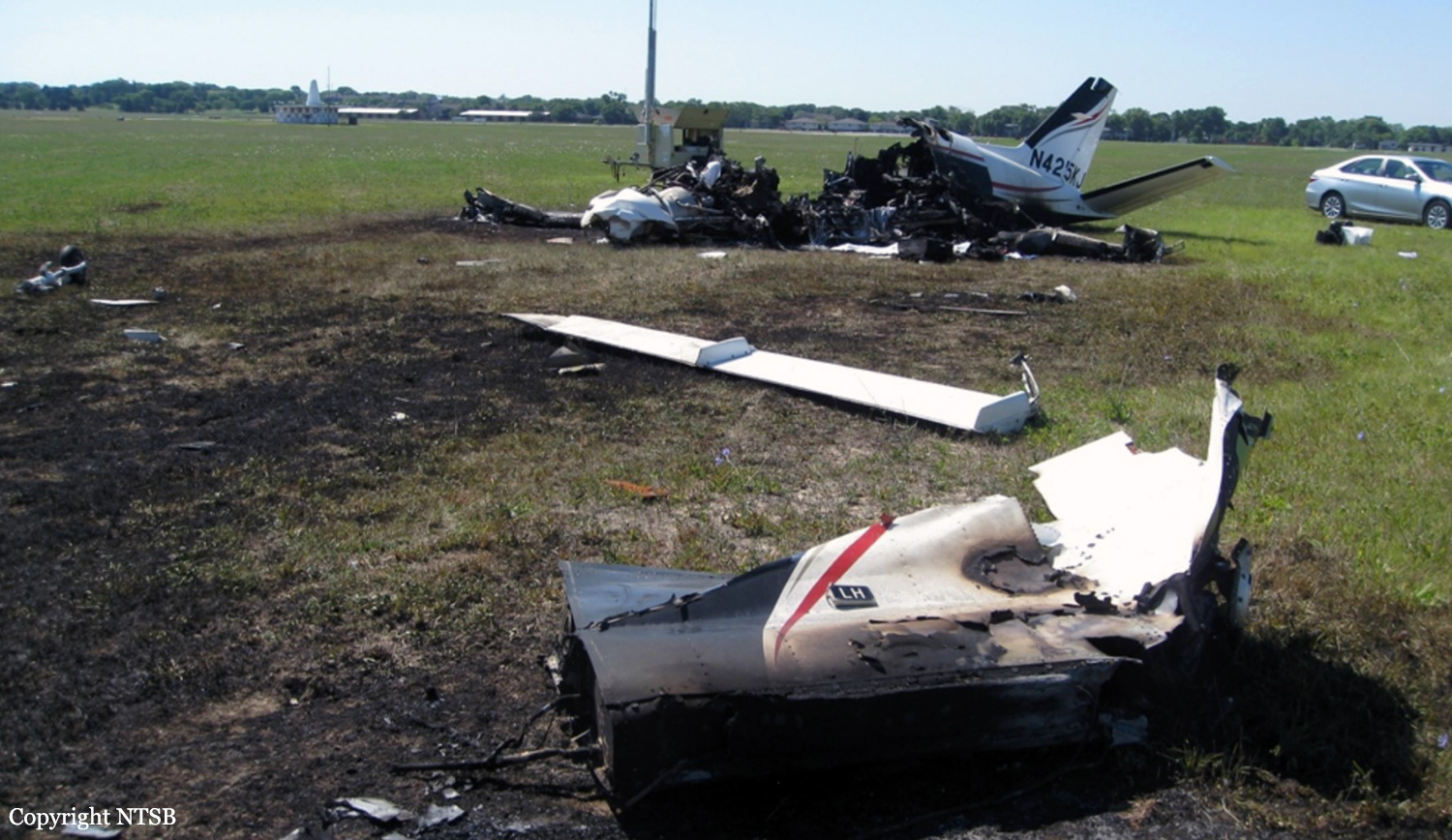
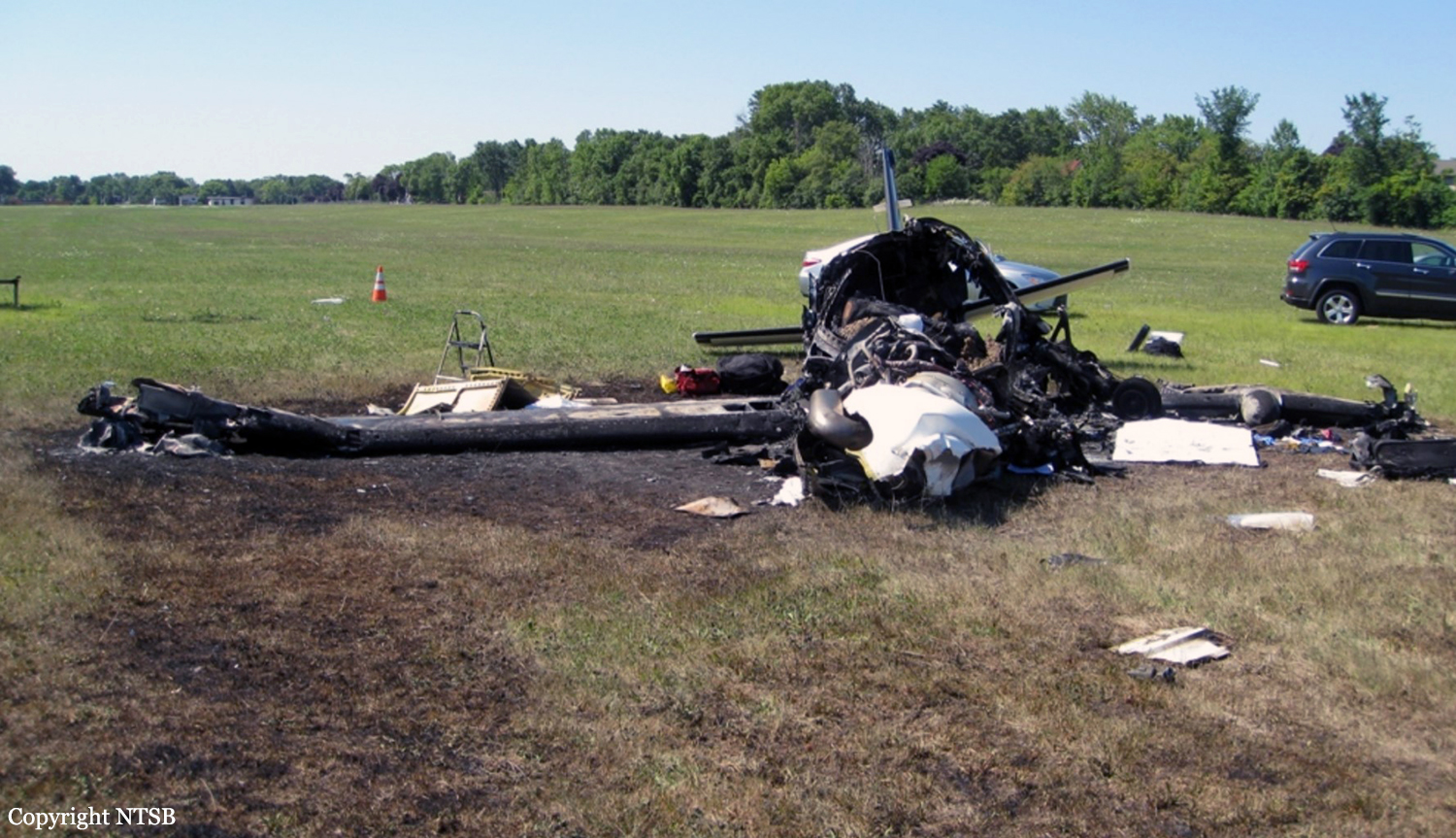
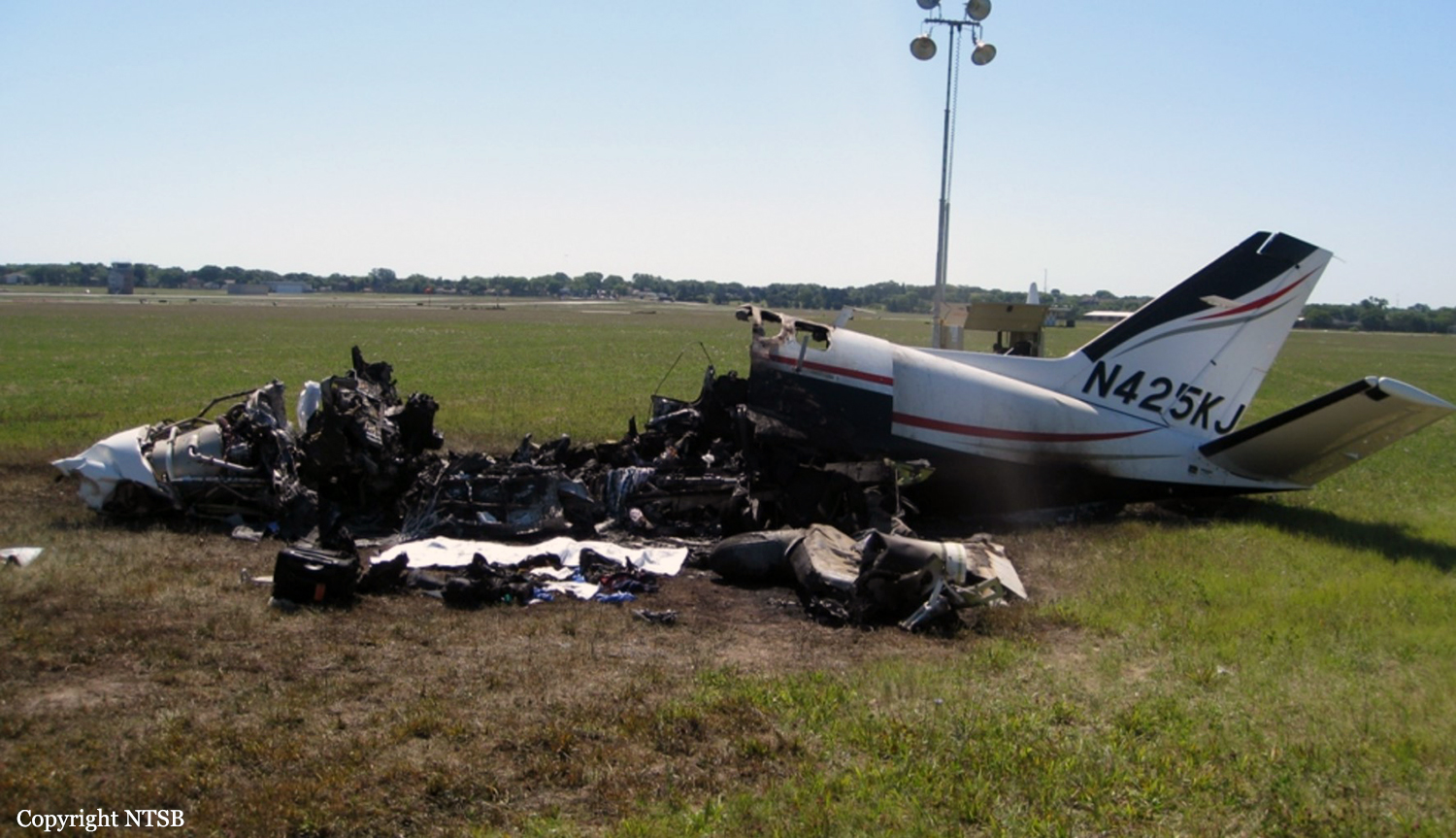
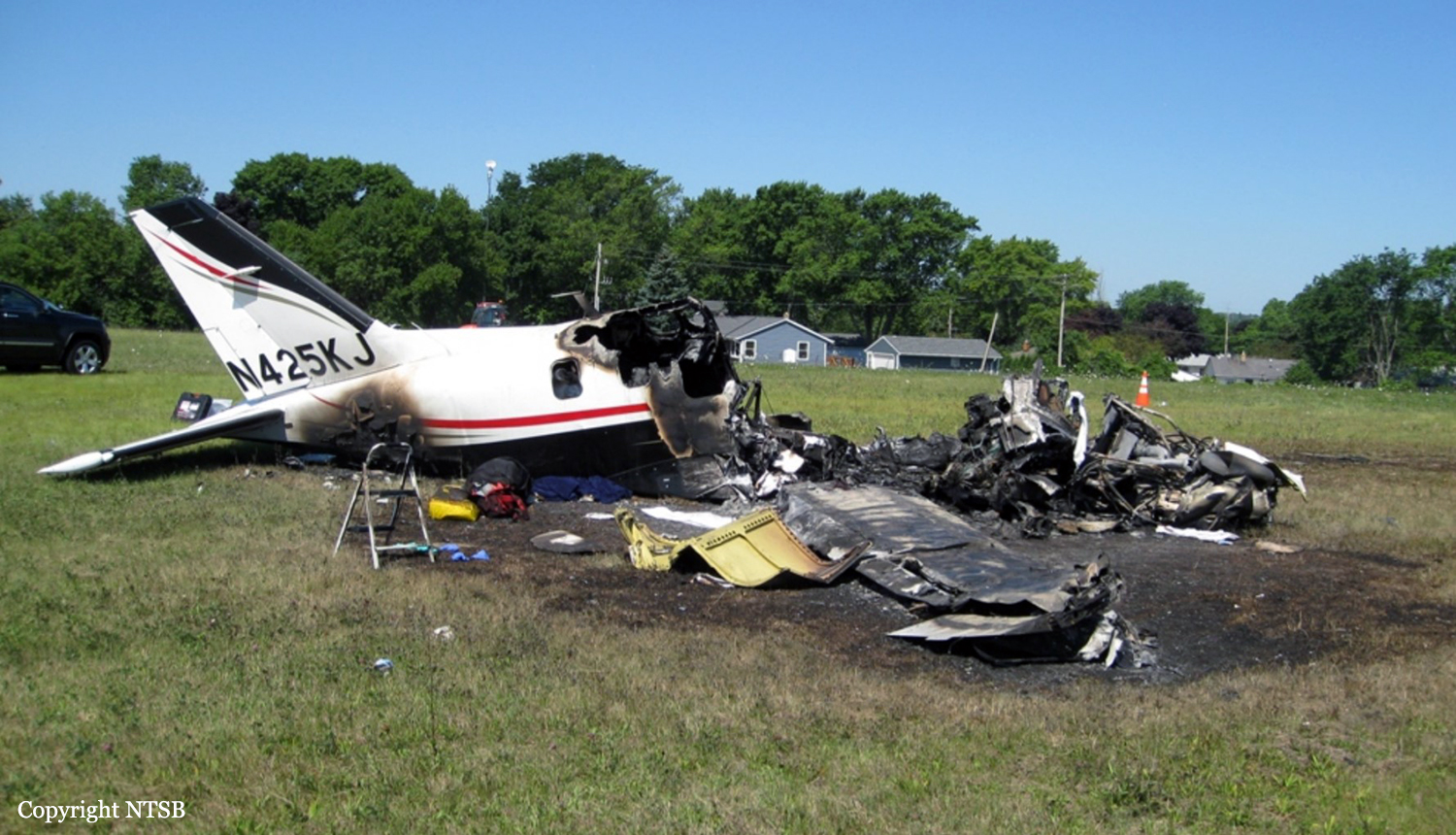
Crash of a Socata TBM-700 in Saint-Jean-les-Deux-Jumeaux: 2 killed
Date & Time:
Aug 6, 2014 at 1030 LT
Registration:
N129AG
Survivors:
Yes
Schedule:
Cannes – Courtrai
MSN:
171
YOM:
2000
Crew on board:
1
Crew fatalities:
Pax on board:
4
Pax fatalities:
Other fatalities:
Total fatalities:
2
Captain / Total hours on type:
700.00
Aircraft flight hours:
1385
Aircraft flight cycles:
1219
Circumstances:
The single engine aircraft departed Cannes-Mandelieu Airport at 1040LT bound for Courtrai-Wevelgem Airport, Belgium, with four passengers and one pilot on board. About one hour and 40 minutes into the flight, while cruising in IMC conditions at FL240, the aircraft start a quick descent to the right until FL149. Speed increased and the overspeed warning sound came on. Forty-five seconds after the start of the quick descent, the airplane initiated a climb with a rate of 10,000 feet per minute until it stalled at FL201, still in IMC conditions. The airplane then entered a dive and went into a flat attitude when it went out of clouds at an altitude estimated between 1,000 and 2,000 feet. This altitude was insufficient to the pilot to regain control and without external visual references, he lost control of the airplane that crashed in a wooded area. The pilot and a passenger were killed while three other passengers were injured. The aircraft was destroyed.
Probable cause:
Due to the absence of any flight data recorder, investigations were unable to determine with certainty the exact cause and circumstances of the accident.
Final Report:
